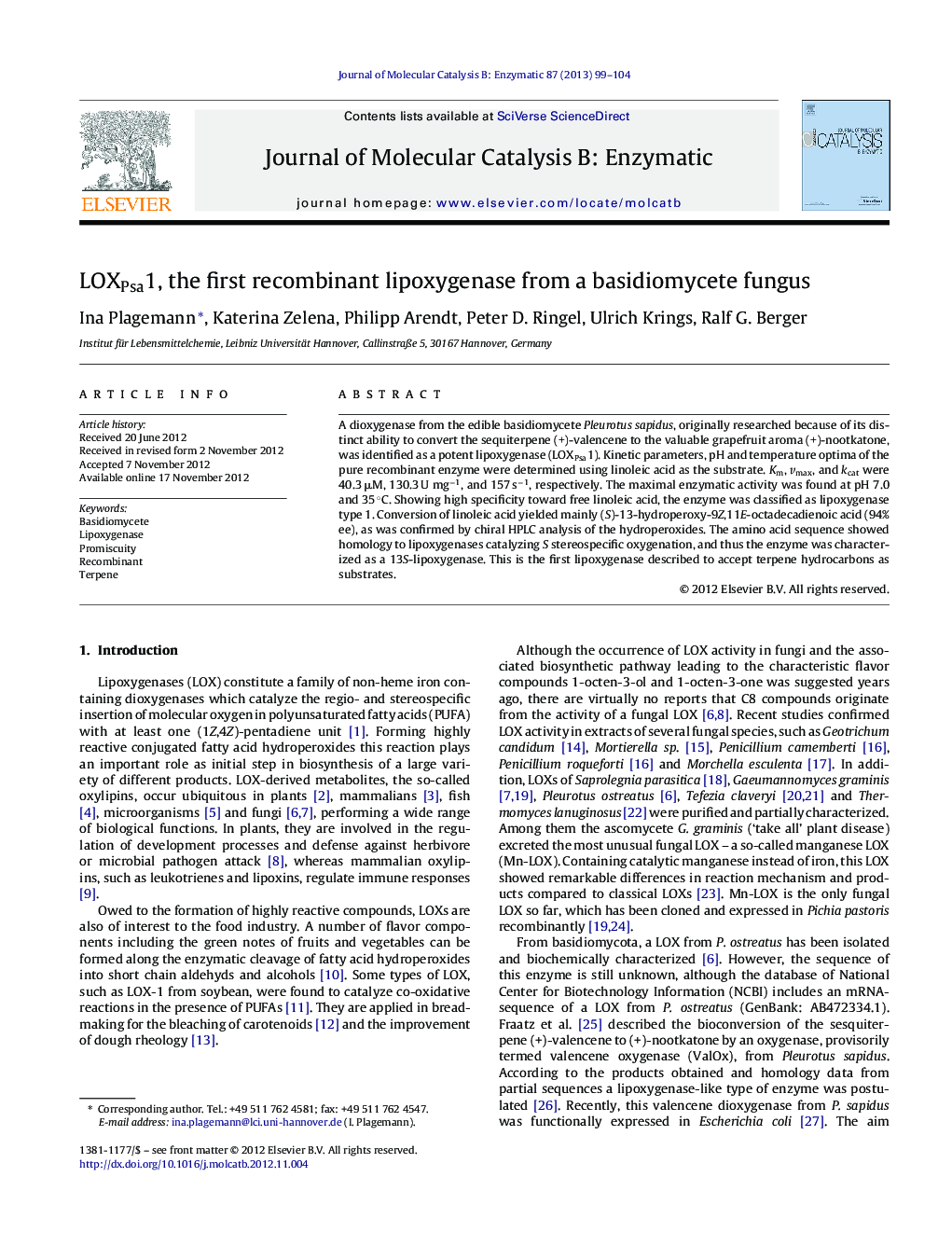| Article ID | Journal | Published Year | Pages | File Type |
|---|---|---|---|---|
| 70158 | Journal of Molecular Catalysis B: Enzymatic | 2013 | 6 Pages |
A dioxygenase from the edible basidiomycete Pleurotus sapidus, originally researched because of its distinct ability to convert the sequiterpene (+)-valencene to the valuable grapefruit aroma (+)-nootkatone, was identified as a potent lipoxygenase (LOXPsa1). Kinetic parameters, pH and temperature optima of the pure recombinant enzyme were determined using linoleic acid as the substrate. Km, vmax, and kcat were 40.3 μM, 130.3 U mg−1, and 157 s−1, respectively. The maximal enzymatic activity was found at pH 7.0 and 35 °C. Showing high specificity toward free linoleic acid, the enzyme was classified as lipoxygenase type 1. Conversion of linoleic acid yielded mainly (S)-13-hydroperoxy-9Z,11E-octadecadienoic acid (94% ee), as was confirmed by chiral HPLC analysis of the hydroperoxides. The amino acid sequence showed homology to lipoxygenases catalyzing S stereospecific oxygenation, and thus the enzyme was characterized as a 13S-lipoxygenase. This is the first lipoxygenase described to accept terpene hydrocarbons as substrates.
Graphical abstractFigure optionsDownload full-size imageDownload as PowerPoint slideHighlights► A pure enzyme from heterologous expression in E. coli was investigated. ► The fungal dioxygenase was characterized as a type-1 13S-lipoxygenase. ► Catalytic activity for linoleic acid was high (vmax 130.3 U mg−1, kcat 157 s−1). ► Conversion of terpene hydrocarbons indicated unique substrate promiscuity.
